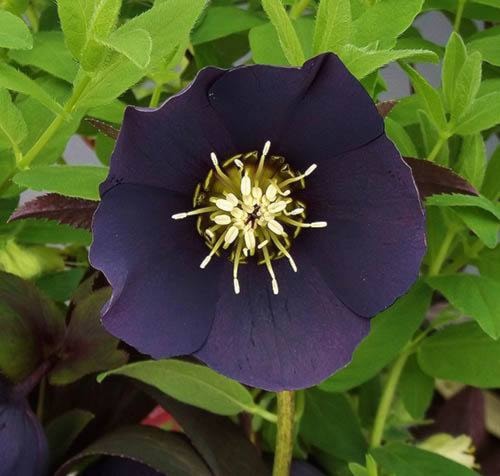There are certain time-honoured traditions that we have all come to expect of autumn – the long-awaited start of the hockey season, turkey and pumpkin pie for Thanksgiving, and the much anticipated article about my favourite perennial, Helleborus.
This is the time of the year when these often slow-growing beauties are finally ready for sale and we get to see which new introductions are available locally.
For collector’s, there is that same urgency that I often see at women’s shoe sales, except that gardeners display a much more restrained frenzy when drooling over the many possibilities.
For those of you who don’t know what I’m talking about, consider the following as nothing more than mere propaganda, or perhaps a few good reasons to find out what all this praise is about.
1. Six months of flowering – starting with the early blooming Christmas Rose, or Helleborus niger cultivars (‘Jacob’, ‘Josef Lemper’, ‘Jonas’), which open their pure white blooms from mid to late November, carrying through with many of the newer evergreen hybrids (Helleborus x nigercors and ballardiae) and ending with the February to early May multicolour blooms of Lenten Rose (Helleborus x hybridus), with a little planning, you can have a solid six months of winter flowers.
2. Every colour of the rainbow – whether you’re an Alba garden snob (I mean this in the nicest way possible) or looking for some near black flowered plants for a Gothic look, there’s a Hellebore for you somewhere. We have apple green (H. corsicus and foetidus), dark burgundy, yellow (‘Golden Lotus’), red, slate blue (‘Metallic Blue Lady’), pink, amber and pure unadulterated white. These blooms are often accented with spotting, picotees and darker veining, and the flower form itself ranges from singles, doubles, semi-doubles and anemone.
3. Sun, part sun or shade – while many gardeners consider Hellebores as strictly shade plants, here in coastal B.C. we have many more options. Some of them are quite sun tolerant including Helleborus x sternii and corsicus, all of the Lenten Roses (Helleborus x hybridus) perform best with morning or late afternoon sun, and Helleborus niger will tolerate deep shade, although it’s best located under a deciduous tree, so that a little winter sun can peek through.
4. The deer don’t eat them – as we keep pushing our homes further and further away from the city core, removing the forests as we go – the remaining deer are left with little choice but to eat the food we have left them, which happens to be our gardens. Since Hellebores are highly toxic plants (when ingested) and were once used to poison the water supply during the Greek siege of Kirrha in 585BC, the deer have the common sense to leave them alone.
5. They grow in containers – even if you have limited space you can still grow Hellebores in containers, and many of the early blooming Christmas Roses in the HGC Collection can even be brought indoors like a houseplant (when in flower) for short periods of time (7-10 days).
6. Many are beautiful foliage plants – Most of the newer Helleborus x nigercors, x ballardiae or ‘Rodney Davey Marbled Group’ are reliably evergreen and a choice few have foliage that rivals the flowers – ‘Anna’s Red’, ‘Penny’s Pink’ and ‘Moonlit Marble’ come to mind here. A hint of silver can be found on Helleborus x sternii ‘Silver Dollar’ and the black-flowered Lenten Roses are also worth considering, as the new growth often emerges a deep purple.
Mike Lascelle is a local nursery manager and gardening author (hebe_acer@hotmail.com).
